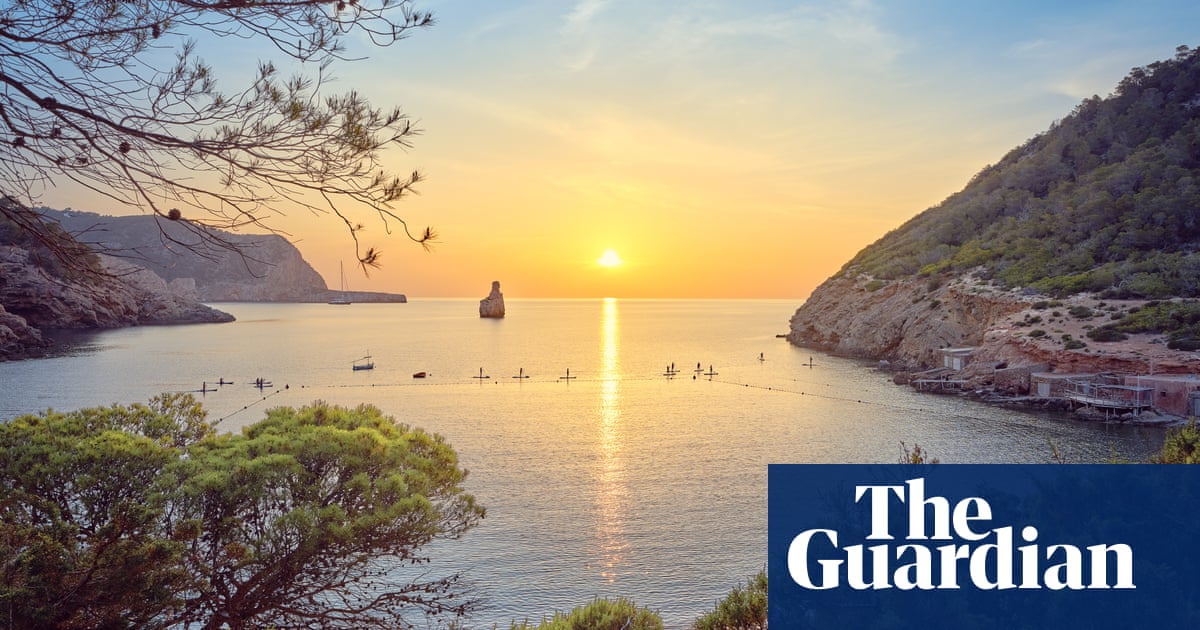“I am not special,” says Grace Winters, the narrator of Matt Haig’s follow-up to his bestseller The Midnight Library. “I am a crotchety old Brit. I am a retired maths teacher from the middle of nowhere. I am a big nothing, is who I am.” But as you might suspect if you’re familiar with Haig’s habit of conjuring the extraordinary out of the ordinary, Grace is far from being a big nothing. When she unexpectedly finds herself on the island of Ibiza, she realises just how much of a something she really is.
A small, long-ago act of kindness towards her colleague Christina leads to Grace being bequeathed a house in the Balearics in Christina’s will. Puzzled as to why a virtual stranger would do such a thing, Grace, recently widowed and still carrying guilt from the childhood death of her son, decides to visit Ibiza to find out, and to investigate Christina’s drowning there. It will be a distraction from her own problems, because “joint pain is like grief, the more you think about it, the more it hurts”.
Arriving at a dilapidated house, armed only with a letter from Christina, Grace eventually finds her way to Alberto Ribas, a raucous diving instructor and a man she has been told by the locals to avoid. On a midnight boat trip with Alberto, where he promises to reveal what happened the night Christina died, Grace witnesses a mysterious light beneath the ocean – La Presencia. This encounter bestows upon her the ability not only to read minds and move objects at will, but also to experience life at its very fullest. Armed with these new skills, Grace sets out to solve the mystery of Christina’s death, a journey that takes her through the island’s ecosystem and leads to the money-hungry developers who threaten to destroy everything.
If The Life Impossible was given a label, it would almost certainly be magic realism, one of those oxymorons (along with “cosy crime”) of which we’re terribly fond. Haig asks that you suspend disbelief, that you accept the powers of La Presencia and the gifts it gives to Grace, and his writing is so persuasive that you do so without question, because reading a Matt Haig novel is like discovering a secret staircase in your home. A whole new set of rooms to explore, and suddenly the layout of the rest of the house makes so much more sense.
On the surface, The Life Impossible is a story of contrasts. Grace travels from her bleak bungalow in Lincoln to solve a crime on the most vibrant island in the world. As her unlikely friendship with Alberto progresses, her mathematical mind embraces the improbable, and she is released from anhedonia – going from feeling nothing at all to feeling everything. Possibly my favourite scene is when Grace, now able to sense the distress of the lobsters in a restaurant tank, smashes the glass with her mind and an army of delighted crustaceans runs past baffled diners and back into the ocean. If you’re going to try out newly acquired telekinesis, that’s a great call.
after newsletter promotion
As the story unfolds, and the circumstances of Christina’s death begin to threaten the island itself, the lines between those contrasts become less defined. Science blends into art and maths dissolves into the natural world. The many seemingly unrelated references Haig scatters across the pages, from Nostradamus to Freddie Mercury, Shakespeare to Hill Street Blues, all begin to weave together, and the only way Grace will save herself – and the island – is to embrace those connections. “It is vast and magnificent, this sequence,” explains Alberto as he and Grace watch the sun set over the island. “It connects you to every single thing in this universe.”
Haig’s wise and moving novel is both a mystery and a love story, a fantasy and a billet-doux to the planet. Perhaps its greatest gift lies in showing us that it is possible to dismantle the boundaries we have built, grasp the connections previously hidden, and appreciate life in all its richness. And the realisation that magic realism probably isn’t an oxymoron after all.
